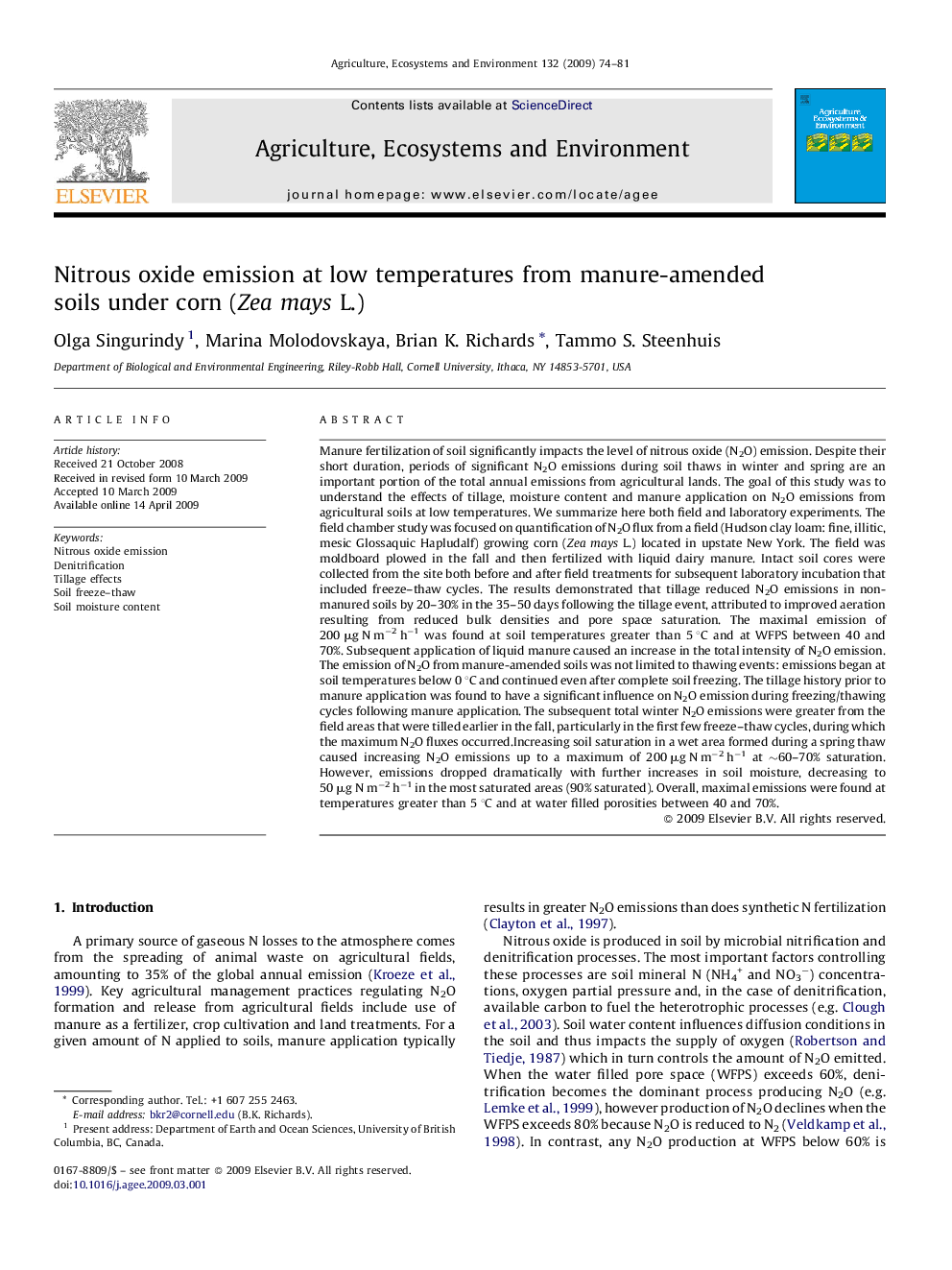| کد مقاله | کد نشریه | سال انتشار | مقاله انگلیسی | نسخه تمام متن |
|---|---|---|---|---|
| 2415144 | 1552125 | 2009 | 8 صفحه PDF | دانلود رایگان |

Manure fertilization of soil significantly impacts the level of nitrous oxide (N2O) emission. Despite their short duration, periods of significant N2O emissions during soil thaws in winter and spring are an important portion of the total annual emissions from agricultural lands. The goal of this study was to understand the effects of tillage, moisture content and manure application on N2O emissions from agricultural soils at low temperatures. We summarize here both field and laboratory experiments. The field chamber study was focused on quantification of N2O flux from a field (Hudson clay loam: fine, illitic, mesic Glossaquic Hapludalf) growing corn (Zea mays L.) located in upstate New York. The field was moldboard plowed in the fall and then fertilized with liquid dairy manure. Intact soil cores were collected from the site both before and after field treatments for subsequent laboratory incubation that included freeze–thaw cycles. The results demonstrated that tillage reduced N2O emissions in non-manured soils by 20–30% in the 35–50 days following the tillage event, attributed to improved aeration resulting from reduced bulk densities and pore space saturation. The maximal emission of 200 μg N m−2 h−1 was found at soil temperatures greater than 5 °C and at WFPS between 40 and 70%. Subsequent application of liquid manure caused an increase in the total intensity of N2O emission. The emission of N2O from manure-amended soils was not limited to thawing events: emissions began at soil temperatures below 0 °C and continued even after complete soil freezing. The tillage history prior to manure application was found to have a significant influence on N2O emission during freezing/thawing cycles following manure application. The subsequent total winter N2O emissions were greater from the field areas that were tilled earlier in the fall, particularly in the first few freeze–thaw cycles, during which the maximum N2O fluxes occurred.Increasing soil saturation in a wet area formed during a spring thaw caused increasing N2O emissions up to a maximum of 200 μg N m−2 h−1 at ∼60–70% saturation. However, emissions dropped dramatically with further increases in soil moisture, decreasing to 50 μg N m−2 h−1 in the most saturated areas (90% saturated). Overall, maximal emissions were found at temperatures greater than 5 °C and at water filled porosities between 40 and 70%.
Journal: Agriculture, Ecosystems & Environment - Volume 132, Issues 1–2, July 2009, Pages 74–81